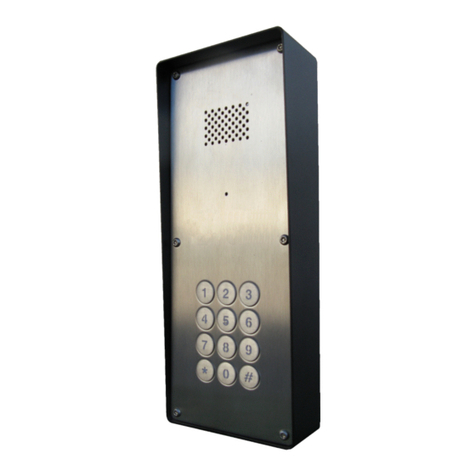QUICK‐FITGSMINSTALLATIONMANUAL
Page2
Contents
1FOR YOUR SAFETY................................................................................................................................................5
2INTRODUCTION ......................................................................................................................................................6
3FEATURES AND APPLICATIONS...........................................................................................................................7
4START UP ................................................................................................................................................................8
5LED DISPLAY...........................................................................................................................................................9
6CLEAR ALL PROGRAMMED DATA FROM SIM ...................................................................................................10
7CONNECTION DIAGRAM ......................................................................................................................................11
8PROGRAMMING QUICK-FIT GSM........................................................................................................................12
9THE QUICK-FIT GSM PARAMETERS...................................................................................................................13
9.1 ALARM SUPPORT...............................................................................................................................................................13
9.2 OUTPUT MANAGEMENT ...................................................................................................................................................17
9.3 SECURITY LEVEL -SL........................................................................................................................................................18
9.4 SET-UP PARAMETERS.......................................................................................................................................................21
9.5 SMS MESSAGES EDITOR....................................................................................................................................................24
9.6 INTERCOM.........................................................................................................................................................................25
9.7 CLIP....................................................................................................................................................................................28
9.8 EVENT LOGGING..............................................................................................................................................................30
9.9 SPECIAL SMS COMMANDS......................................................................................................................................................31
10 PRINT-OUT OF THE PARAMETERS....................................................................................................................33
10.1 RECEIVE ALL PARAMETERS (PALL)..................................................................................................................................33
10.2 CHECK SW REVISION (PSW).....................................................................................................................................................33
10.3 CHECK SIGNAL QUALITY (PSQ)..................................................................................................................................................33
10.4 RECEIVE TELEPHONE NUMBERS (PTN)...........................................................................................................................33
10.5 RECEIVE LINKS (PLN)........................................................................................................................................................33
10.6 RECEIVE INPUT PARAMETERS (PIN)................................................................................................................................33
10.7 RECEIVE INPUT FILTER VALUE (PID)...............................................................................................................................34
10.1 RECEIVE INPUT FILTER VALUE (POD).............................................................................................................................34
10.2 RECEIVE DELAY BEFORE DIAL VALUE (PDD)...................................................................................................................34
10.3 RECEIVE ACCESS TELEPHONE NUMBERS (PSL)..............................................................................................................34
10.4 RECEIVE OUTPUT PARAMETERS (POS)...........................................................................................................................34
10.5 RECEIVE ALL PROGRAMMED SMS MESSAGES (P#)..........................................................................................................34
10.6 RECEIVE SET UP PARAMETERS VALUE (PPA)..................................................................................................................34
10.7 RECEIVE CREDIT PARS PARAMETERS (PCREF).............................................................................................................................35
10.8 RECEIVE ALL CLIP PARAMETERS (PCLP)..........................................................................................................................35
10.9 RECEIVE INTERCOM BUTTON 1PARAMATERS (PDEA)...................................................................................................................35
10.10 RECEIVE INTERCOM BUTTON 2PARAMATERS (PDEB)..............................................................................................................35
10.11 RECEIVE INTERCOM BUTTON 3PARAMATERS (PDEC)..............................................................................................................35
10.12 RECEIVE INTERCOM BUTTON 4PARAMATERS (PDED)..............................................................................................................36
10.13 RECEIVE INTERCOM BUTTON 5PARAMATERS (PDEE)..............................................................................................................36
10.14 RECEIVE INTERCOM BUTTON 6PARAMATERS (PDEF)..............................................................................................................36




























